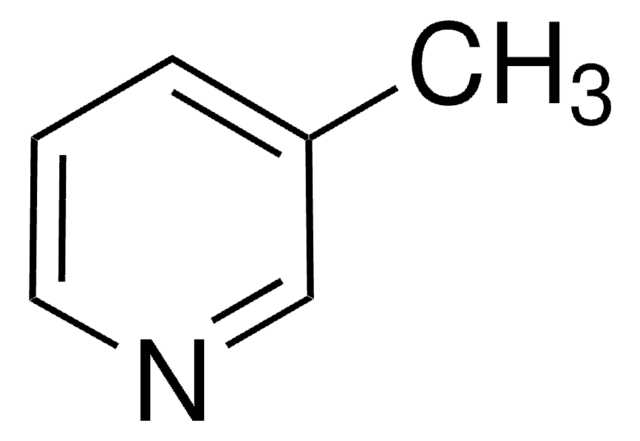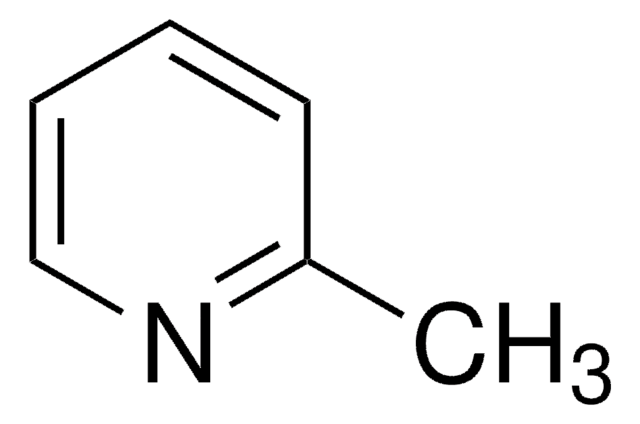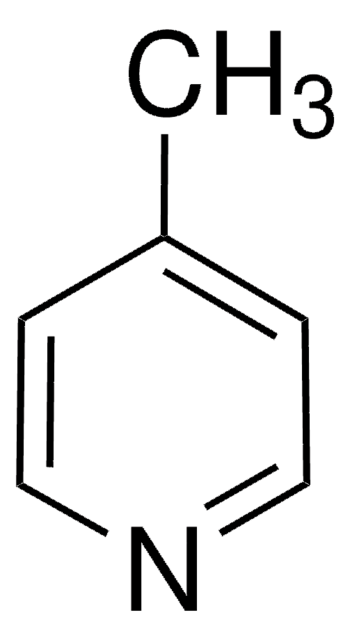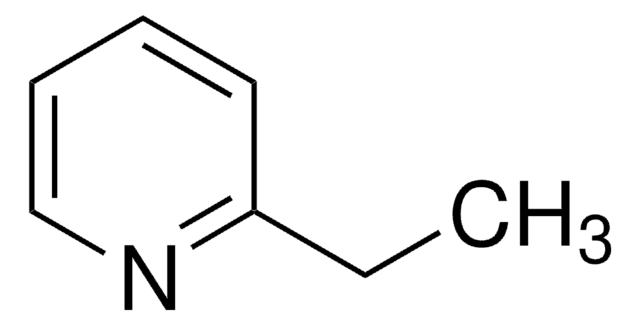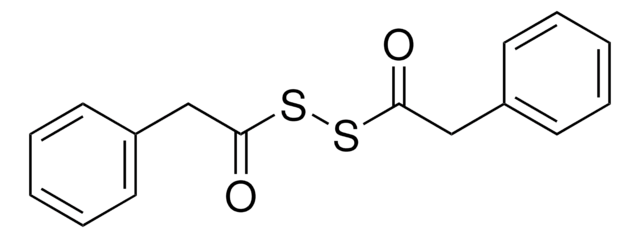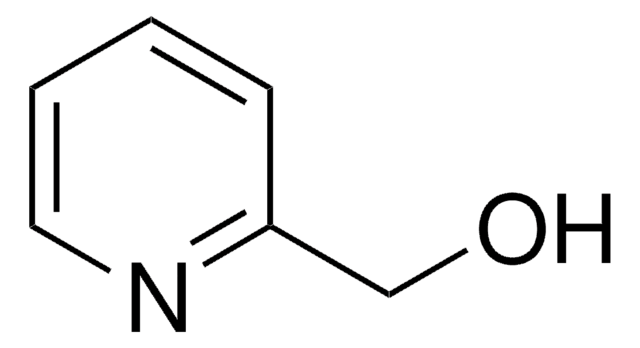109835
2-Methylpyridin
98%
Synonym(e):
2-Picolin, α-Picolin, 2-Methyl-pyridin, NSC 3409
About This Item
Empfohlene Produkte
Dampfdichte
3.2 (vs air)
Qualitätsniveau
Dampfdruck
10 mmHg ( 24.4 °C)
Assay
98%
Selbstzündungstemp.
995 °F
Expl.-Gr.
8.6 %
Brechungsindex
n20/D 1.500 (lit.)
bp
128-129 °C (lit.)
mp (Schmelzpunkt)
−70 °C (lit.)
Löslichkeit
H2O: freely soluble
alcohol: miscible
diethyl ether: miscible
Dichte
0.943 g/mL at 25 °C (lit.)
SMILES String
Cc1ccccn1
InChI
1S/C6H7N/c1-6-4-2-3-5-7-6/h2-5H,1H3
InChIKey
BSKHPKMHTQYZBB-UHFFFAOYSA-N
Suchen Sie nach ähnlichen Produkten? Aufrufen Leitfaden zum Produktvergleich
Verwandte Kategorien
Anwendung
Signalwort
Danger
Gefahreneinstufungen
Acute Tox. 3 Dermal - Acute Tox. 4 Inhalation - Acute Tox. 4 Oral - Eye Dam. 1 - Flam. Liq. 3 - Skin Corr. 1C - STOT SE 3
Zielorgane
Respiratory system
Lagerklassenschlüssel
3 - Flammable liquids
WGK
WGK 1
Flammpunkt (°F)
84.2 °F - closed cup
Flammpunkt (°C)
29 °C - closed cup
Persönliche Schutzausrüstung
Eyeshields, Faceshields, Gloves, type ABEK (EN14387) respirator filter
Hier finden Sie alle aktuellen Versionen:
Besitzen Sie dieses Produkt bereits?
In der Dokumentenbibliothek finden Sie die Dokumentation zu den Produkten, die Sie kürzlich erworben haben.
Kunden haben sich ebenfalls angesehen
Protokolle
US EPA Method 8270 (Appendix IX): GC Analysis of Semivolatiles on Equity®-5 (30 m x 0.25 mm I.D., 0.50 μm)
Unser Team von Wissenschaftlern verfügt über Erfahrung in allen Forschungsbereichen einschließlich Life Science, Materialwissenschaften, chemischer Synthese, Chromatographie, Analytik und vielen mehr..
Setzen Sie sich mit dem technischen Dienst in Verbindung.